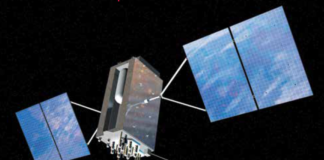A while back, I wrote an article on departing an airport in Class G airspace. To follow up, we’ll delve a little deeper into the departure and discuss entering the radar environment to see what radar provides. We’ll also look at what radar doesn’t provide.
Basics
As a quick recap, there are three types of departures you can use to get out of any airport, Class G included. A Standard Instrument Departure (SID), which conveniently shrinks long, complicated instructions full of headings, courses, altitudes and navaids into a charted procedure.
The Obstacle Departure Procedure (ODP) is essential information for any pilot, even those departing VFR at night or in poor visibility. Providing protection from obstacles penetrating a 40:1 slope from the airport, the ODP is mandatory for commercial operators and is a good idea any time you can’t see the obstacles. ODPs are typically just a brief textual description, but some of the more involved ones are charted.
Although the AIM and the “Instrument Pilot Handbook” both mention two types of departure procedures specifically, we find a third by default when the criteria for the SID and the ODP aren’t met, and therefore no guidance is provided.
As the AIM describes it: “If an aircraft may turn in any direction from a runway within the limits of the assessment area (see paragraph 5-2-8b3) and remain clear of obstacles, that runway passes what is called a diverse departure assessment and no ODP will be published. A SID may be published if needed for air traffic control purposes.”
The paragraph reference in that excerpt describes the 40:1 (152 feet per nautical mile) Obstacle Clearance Surface that extends out to 25 nm in non-mountainous areas and 46 nm in mountainous areas.
Because it passes what is called a “Diverse Departure Assessment,” it is commonly referred to as a diverse departure. Although you won’t see that term in the Pilot/Controller Glossary, the term diverse departure is defined in the TERPS as “A departure without restrictions to the route of flight.”
Lee Smith provided a good introduction to these types of visual climb over airport departures (VCOA) last month in his “VCOA Basics” article.
Don’t Hit Nuthin’
Flying a SID or an ODP, we are comforted knowing that the route has been assessed for obstacle clearance and, when necessary, signal reception. The departure designers do assume, however, that we can climb at 200 feet per nautical mile. At a 90-knot groundspeed, that’s 300 fpm, at 120 it’s 400 fpm, and at 150 knots it’s 500 fpm—pretty basic numbers. Do be wary of a performance loss if experiencing a head-to-tailwind shear due to a turn during the departure or from an inversion layer.
Our 200-feet-per-nautical-mile climb (or better) will give us a minimum of 48 feet of obstacle clearance provided we cross the departure end of the runway (DER) at 35 feet AGL, and don’t turn below 400 feet (see AIM paragraph 5-2-8b1). The 48 feet clearance compounds, so at two miles you have at least 96 feet, and so on.
This protection extends out to 25 nm from the airport in non-mountainous terrain, and 46 miles from the airport in mountainous terrain.
If you’re not sure what type of terrain you’re flying over, look at AIM Figure 5-6-3 (camouflaged in with the ADIZ boundaries), or you could subtract the Maximum Elevation Figure (MEF) on the sectional from the local Off-Route Obstruction Clearance Altitude (OROCA) and see if you get 2000 feet or 1000 feet.
Those 25/46 distances, by the way, are taken from a specific point on the runway, called a “Departure Reference Point” or DRP, which is 2000 feet from the start of the departure runway.
Although the AIM only specifies that obstacle clearance is provided if “climbing to 400 feet above the departure end of runway elevation before making the initial turn,” it doesn’t specify what turns may be safe below that altitude. If, for instance, you felt you had to make an upwind jog to avoid some wake turbulence, would that be considered an “initial turn” and therefore put you in no-man’s-land when it comes to obstruction clearance? Common sense says no, but we can use some resources to help us find out.
Low, close-in obstacles are those obstacles that penetrate the 40:1 obstacle clearance surface within one nautical mile of the DER. These obstacles would only require a specific climb gradient up to 200 feet above the DER elevation, and the TERPS specifically state that a special climb gradient should not be developed solely for these low, close-in obstacles.
Instead, they are listed (textually) in Section L of AeroNav approach booklets. Jeppesen puts them graphically on the airport plan view (10-9 or back of first approach chart). If the visibility is such that those obstacles cannot be clearly seen when taking the runway, the low, close-in obstacle information can help you make an informed decision about the safest way to proceed.
Radar Doesn’t Always Help
A common misconception among those who fly primarily under the comforting blanket of radar coverage is that once you hear the phrase “radar contact” the controller assumes responsibility for obstacles to your flight. On the contrary, “radar contact” does nothing to alleviate your obstacle avoidance responsibilities—a fact best remembered nearing the 25/46 mile boundary. Once you get to these limits, and you’re not on a published route, good preflight research (OROCA anyone?) and excess climb rate are your best allies.
As the AIM itself says: “When used by the controller during departure, the term “radar contact” should not be interpreted as relieving pilots of their responsibility to maintain appropriate terrain and obstruction clearance which may include flying the obstacle DP.”
Hearing “radar contact” means only one thing: You no longer must give position reports over the points defining off-airways routes in your flight plan or over compulsory reporting points on the charts (e.g. solid black VOR or VORTAC symbols), unless requested to do so by ATC. That is a workload reducer for sure, but doesn’t protect you from the rocks.
All of that being said, if the departure occurs in an area of good radar coverage, the departure area can be provided with a Diverse Vector Area (DVA), where radar can play a bigger role.
The glossary defines DVA: “In a radar environment, that area in which a prescribed departure route is not required as the only suitable route to avoid obstacles. The area in which random radar vectors below the MVA/MIA, established in accordance with the TERPS criteria for diverse departures, obstacles and terrain avoidance, may be issued to departing aircraft.”
The MVA is the Minimum Vectoring Altitude for TRACON controllers. Similarly, the MIA is the Minimum IFR Altitude for center controllers. These minimum altitudes at which a controller may provide off-route vectors are not published on any flight-crew materials. Rest assured, ATC knows what they are and even if they’re below other minimum altitudes such as the MEA.
The Diverse Vector Area has been assessed for suitability of radar vectors below the MVA/MIA in that airport’s vicinity, and can be thought of as being analogous to the 700 feet AGL transition areas that lead up to the broader areas of 1200 feet AGL Class E airspace, except that we can’t see them on any chart.
The “Instrument Procedures Handbook” summarizes the MVA and DVA: “ATC may establish a minimum vectoring altitude (MVA) around certain airports. This altitude is based on terrain and obstruction clearance and provides controllers with minimum altitudes to vector aircraft in and around a particular location. However, it may be necessary to vector aircraft below this altitude to assist in the efficient flow of departing traffic. For this reason, an airport may have established Diverse Vector Area (DVA). DVA design requirements are outlined in TERPS and allow for the vectoring of aircraft off the departure end of the runway below the MVA.”
The practical importance of the DVA is that ATC can provide radar vectors anywhere above the minimum altitude of the DVA.
Unlike hearing “radar contact,” receiving your first radar vector does carry weight when it comes to obstruction clearance. As AIM 5-2-8c2 states “…obstacle clearance is not provided by ATC until the controller begins to provide navigational guidance in the form of radar vectors.” This distinction cannot be overstated.
Right Tool for the Job
Whether you depart a remote Class G airport or a busy Class B field with an RNAV SID, understanding the limitations and provisions of the various departure types is essential. What obstacle clearance is provided, if any? What turns can you make, and at what point? What is the difference between radar contact and getting a radar vector?
The goal of the departure is to get us safely off an airport and established in the enroute structure where published routes provide obstacle clearance and signal reception, and off-airway routes can be assessed with an understanding of OROCA and navaid service volumes. The more we understand about how our individual departure paths are assessed and designed, the more safely we can reach that enroute structure.
Evan Cushing had a long career at a regional airline, but is now a full-time educator. This Clinic was due last month, but Evan performed a diverse departure from his desk to actually fly.




